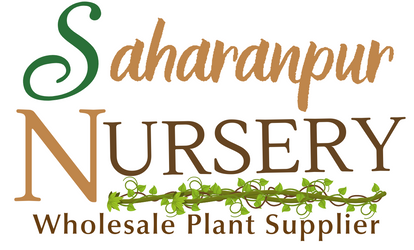
Cardboard Palm - Zamia Furfuracea
Scientific Name and General Overview
The Cardboard Palm, scientifically known as Zamia furfuracea, is a fascinating member of the cycad family, native to the coastal areas of Veracruz, Mexico. Despite its common name, it is not a true palm but shares similar aesthetic qualities that make it a popular choice for tropical and subtropical landscaping. Renowned for its stiff, leathery, and slightly fuzzy leaves resembling cardboard, this slow-growing cycad is well-suited for gardens, containers, and indoor spaces.
Physical Description
The Cardboard Palm boasts unique features that contribute to its charm:
· Height and Spread: Grows up to 1 meter (3 feet) tall and spreads about 1.5 meters (5 feet) wide, making it ideal for small spaces.
· Leaves: Pinnate leaves with 12–16 pairs of broad, oblong leaflets that have a textured, slightly fuzzy surface. The foliage is a deep green, adding lushness to any setting.
· Trunk: Short and subterranean, with a tuberous structure that stores water, making the plant drought-resistant.
· Cones: As a dioecious plant, male and female cones are borne on separate plants. Female cones produce seeds enclosed in a fleshy red covering, which is toxic if ingested.
Cultivation and Growth
The Cardboard Palm is highly adaptable and easy to grow:
· Climate: Thrives in tropical and subtropical regions, performing best in USDA zones 9 to 11. It is frost-sensitive and should be protected in colder areas.
· Soil: Prefers sandy, well-drained soil but can tolerate poor soils. Avoid waterlogged conditions to prevent root rot.
· Light: Grows well in full sun to partial shade. Indoors, it requires bright, indirect light.
· Watering: Drought-tolerant once established, it requires minimal watering. Allow the soil to dry out between waterings.
· Propagation: Typically propagated through seeds, though this is a slow process.
Uses
Ornamental Landscaping:
o Ideal for rock gardens, tropical landscapes, and as a low-maintenance ground cover.
o Its compact size and attractive foliage make it a great choice for accent planting in small gardens.
Container Gardening:
o Popular for patios, balconies, and indoor spaces when grown in decorative pots.
o Adds a tropical touch to interiors and blends well with modern and rustic decor.
Erosion Control:
o Its deep root system helps stabilize soil in sloped areas, making it useful for erosion control in gardens.
Care and Maintenance
The Cardboard Palm is a hardy and low-maintenance plant:
· Fertilization: Apply a balanced, slow-release fertilizer 2–3 times a year to encourage healthy growth.
· Pruning: Remove dead or yellowing leaves to maintain its appearance. Avoid over-pruning, as the plant's slow growth limits foliage replacement.
· Pest and Disease Resistance: Generally resistant to pests and diseases, though it may occasionally attract scale insects or mealybugs.
Safety Considerations
All parts of the Cardboard Palm, especially the seeds, are toxic to humans and pets if ingested. Care should be taken to place the plant out of reach of children and animals.
Popularity and Distribution
The Cardboard Palm has gained international popularity due to its unique foliage, adaptability, and low care requirements. It is commonly grown in tropical and subtropical regions worldwide, including the southern United States, Southeast Asia, and Australia.
Conclusion
The Cardboard Palm (Zamia furfuracea) is a stunning and versatile ornamental plant that brings a touch of the tropics to any space. Its distinctive "cardboard-like" leaves, compact size, and resilience make it an excellent choice for both outdoor and indoor settings. Whether used in a garden, as a container plant, or as an accent piece in a landscaped area, the Cardboard Palm is sure to captivate with its bold and timeless beauty.
